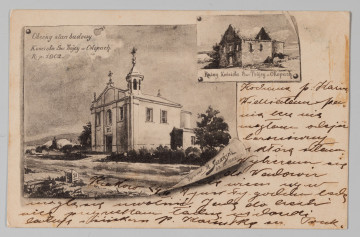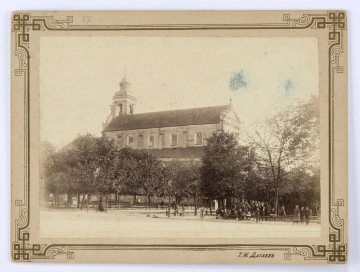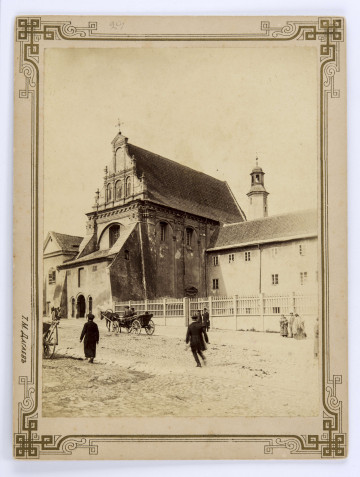
Holy Trinity Church in Okopy
1902
National Museum in Lublin
Part of the collection: Genre scenes (19th–1st half of the 20th c.)
The life of Henryk Szczygliński coincided with a turning point in the post-partition history of Poland. He was an artist who actively participated in the events of the era. He went down in history as a soldier of the Legions about whose daring deeds legends circulated. During his service in the Legions, he created many works on war. After completing his education abroad, at the beginning of the 20th century, the painter came to the Young Poland city of Krakow. He quickly found his place in the artistic circles and became one of the leading figures of bohemia. In accounts from the period, he appears as a colourful character – an elegant dandy, a charming seducer, a young man living life to the full with fantasy. ‘Szczygieł frequented artistic salons and cafés and was a member of the Zielony Balonik [Green Balloon] cabaret at Jama Michalika. At the same time, he studied at Krakow's academy, which after Fałat's reform, like all Polish art, experienced a flowering of modernism inspired by the trends of impressionism, Viennese secession and expressionism.
Interested in landscapes, Szczygliński studied in the studios of J. Malczewski, L. Wyczółkowski, T. Axentowicz and probably the most important master of the genre, J. Stanisławski. Thanks to him, focussed so far on nocturnal, foggy symbolic urban visions (Halabardnik) [Halberdnik], the young painter discovered the beauty of the countryside. The Rebel turned out to be the most talented pupil, who prolonged the existence of the Polish school of landscape painting by one generation. He did not copy the teachers; he filtered their message through his sensitivity, creating an individual language. His usually large paintings are distinguished by original framing and composition, a specific range of colours, and a definite contours line. These features are present in Odpust św. Rozalii na Kurpiach [St. Rozalia's Feast in Kurpie]. The painting depicts a place of worship known since the 18th century, a small chapel standing in a secluded forest locality. The artist showed a fragment of the picturesque landscape from a great distance. In his typical way, he placed the main elements of the composition in the background. A colourful procession of pilgrims surrounds a wooden church, and its dark body firmly cut against the cool blue of the sky. The frame is closed on the sides by broad trees. An unbroken space stretches in front of the viewer, which in the lower part is filled with an autumn meadow with tufts of red grass and colourful flowers.
Bożena Kasperowicz
Author / creator
Dimensions
cały obiekt: height: 177 cm, width: 134 cm
Object type
painting
Technique
oil technique
Material
oil-based paint, canvas
Creation time / dating
Creation / finding place
Owner
The National Museum in Lublin
Identification number
Location / status

1902
National Museum in Lublin

1890 — 1910
National Museum in Lublin

1890 — 1910
National Museum in Lublin
DISCOVER this TOPIC
Museum of King Jan III's Palace at Wilanów
DISCOVER this PATH
Educational path